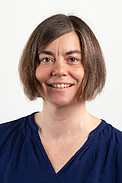Thesis Topic: Transform our Understanding of the Baryon Cycle with High-Resolution Quasar Spectroscopy
Thesis Supervisor: Celine Peroux and Andrea Merloni (MPE)
Abstract
The term baryons refers to the normal matter of the Universe. Surprisingly, only a minority of this normal matter can be probed by observations of starlight from galaxies. The PhD project aims at studying the remaining 90% of the baryons traced by the intergalactic gas. Baryons from the cosmic web accrete onto galaxies, cool into a phase which fuels star formation, expelling material in powerful outflows which transform the surrounding circumgalactic medium (Tumlinson+17). Today, the lack of observational constraints limits our understanding of this so-called baryon cycle (Peroux&Howk20). Such studies are essential to understand the growth of structure in the Universe and hence impact the fields of astrophysics, cosmology and fundamental physics.
We will use the powerful synergy of absorption and emission diagnostics by observing one million background quasars and 1.5 million foreground objects in the same sky regions with the VISTA/4MOST multi-object spectrograph. Today, the circumgalactic medium is best probed by the emerging technique of examining the gas in absorption against background sources whose lines of sight pass through an identified foreground galaxy's halo. The absorption lines offer the most compelling way to study the physical properties of the mixed halos gas. Characterising the multi-phase circumgalactic medium still remains a critical and complex problem in astrophysics, in large part due to the lack of statistically significant observational constraints. Important questions yet to be addressed include: i) how are the metals distributed in the circumgalactic medium and how far do they extend? ii) what is the mass of the different phases of the circumgalactic medium and does it close the baryon budget?
The student will be part of the 4MOST/ByCycle projec (http://www.eso.org/ <http://www.eso.org/>; ~cperoux/ByCycle.html) an international team combining expertise in X-ray and optical multi-object observations as well as state-of-the-art simulations. Trips to the observatories in Chile will be possible.

